Web Performance Workshop
Simon Hearne
Web Performance Consultant
Agenda
We know that speed matters
 |
The BBC loses an additional 10% of users for every additional second it takes to load |
 |
Pinterest improved load time by 40% and saw 15% increase in SEO traffic and 15% increase in conversions |
 |
Financial Times added a one second delay to every page view and saw a 4.9% drop in the number of articles users read over a 7 day window |
 |
For every 100ms decrease in homepage load speed, Mobify's customer base saw a 1.11% lift in session based conversion |
Speed is a ranking factor

Speed is now a landing page factor for Google Search and Ads
Everyone is impacted by site speed
SEO
Product
Marketing
Operations
Development
User Experience
Business Intelligence
But who owns it?
Measuring Performance
Measurement:
- Rule-based
- Ad hoc
- Synthetic
- Real User
- Application
Measurement:
- Rule-based
- Ad hoc
- Synthetic
- Real User
- Application
Google Lighthouse
In Chrome Developer Tools / Audits
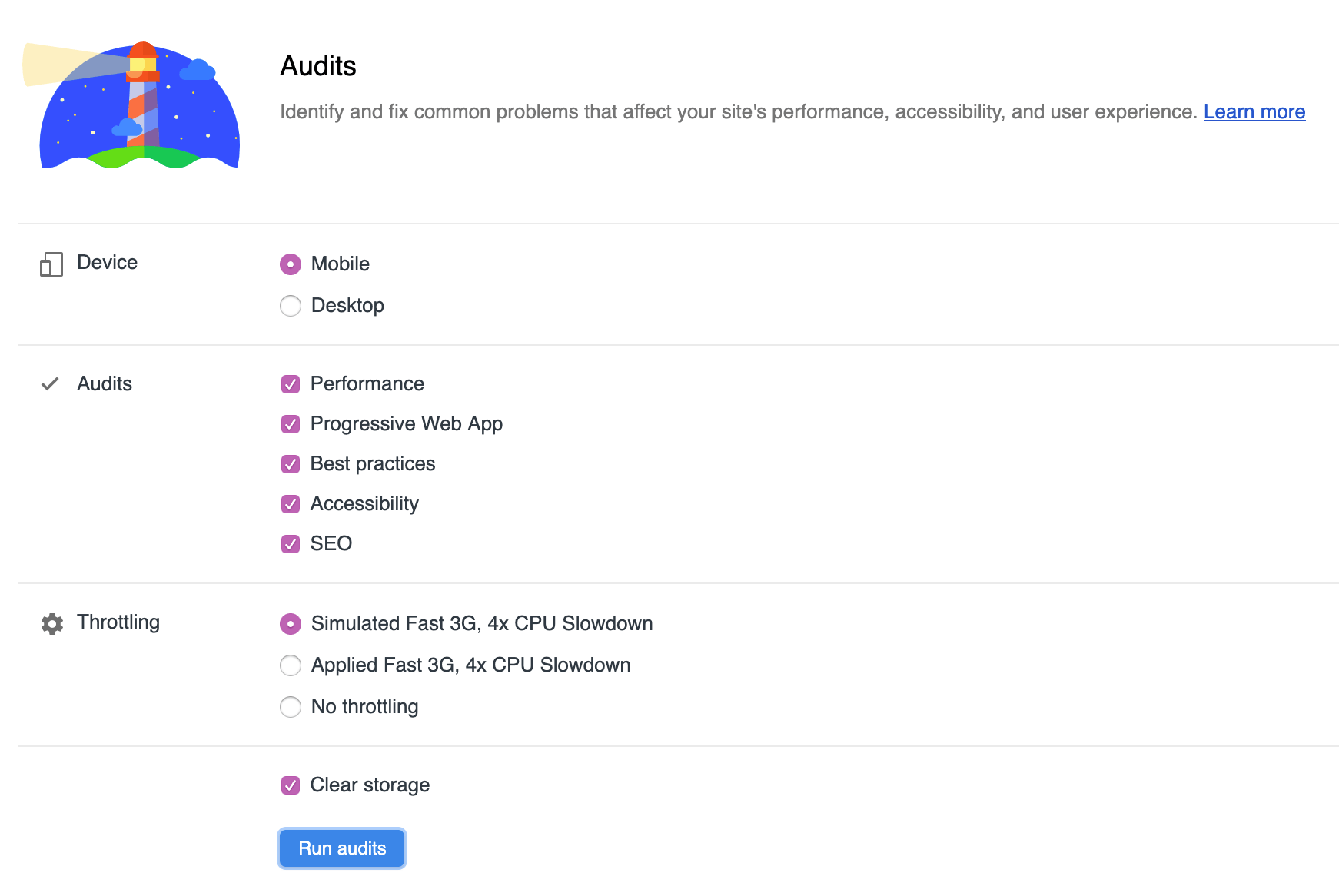
Google Lighthouse

Google PageSpeed Insights

PageSpeed is a Ranking Factor
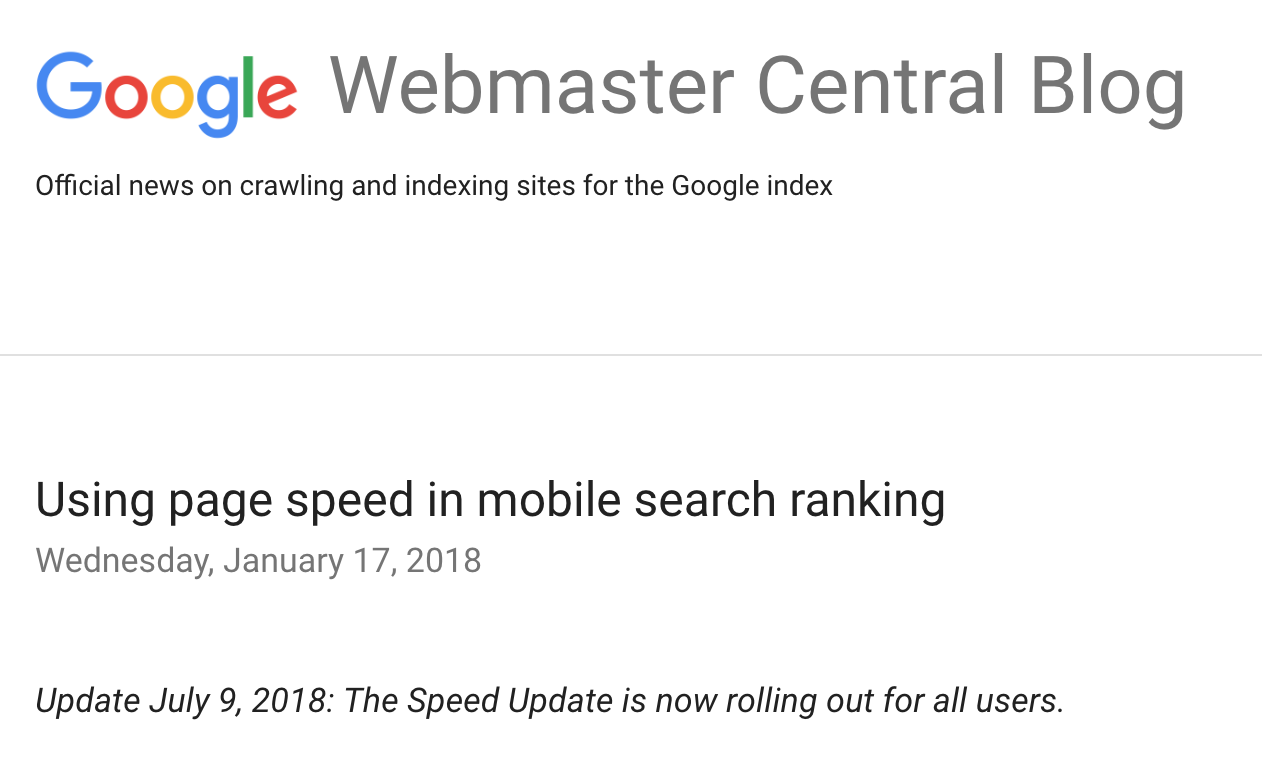
Measurement:
- Rule-based
- Ad hoc
- Synthetic
- Real User
- Application
Developer Tools
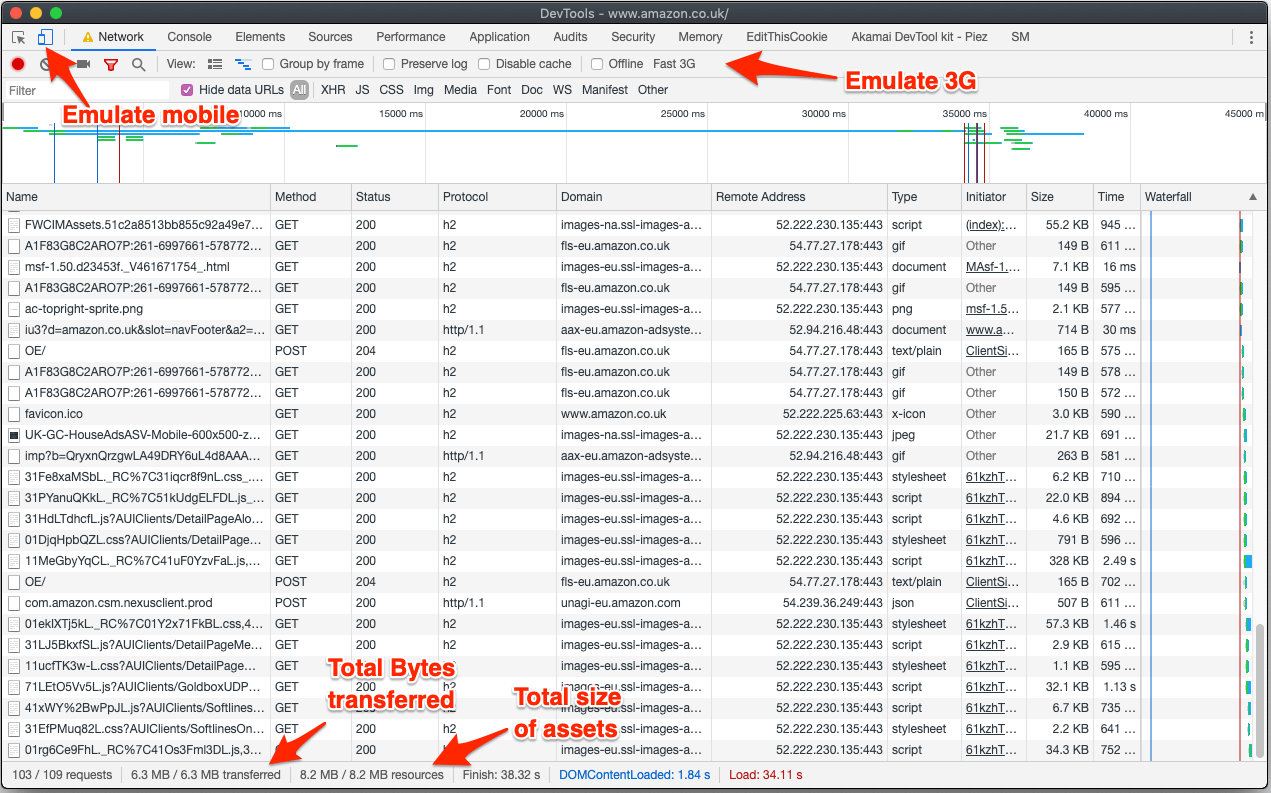
Identify large & slow resources
Developer Tools
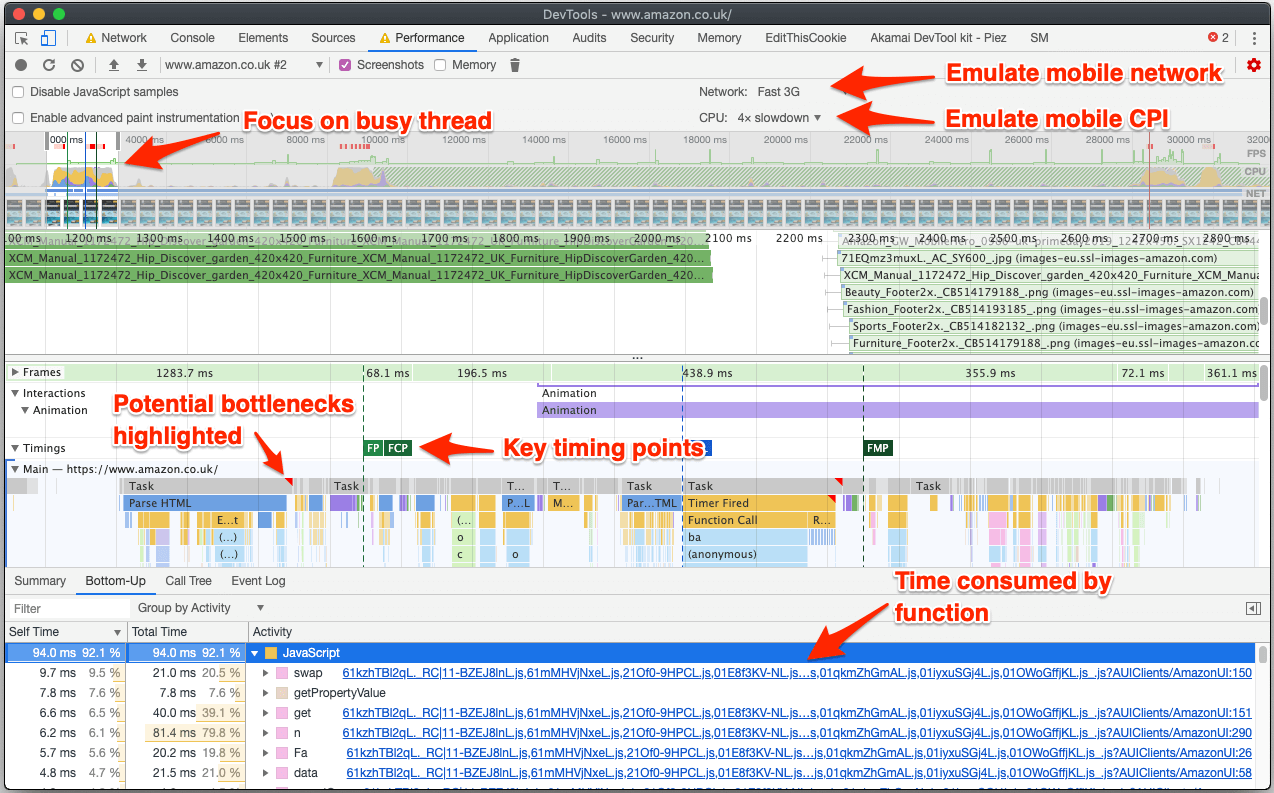
Identify rendering & JavaScript bottlenecks
Works on real devices too
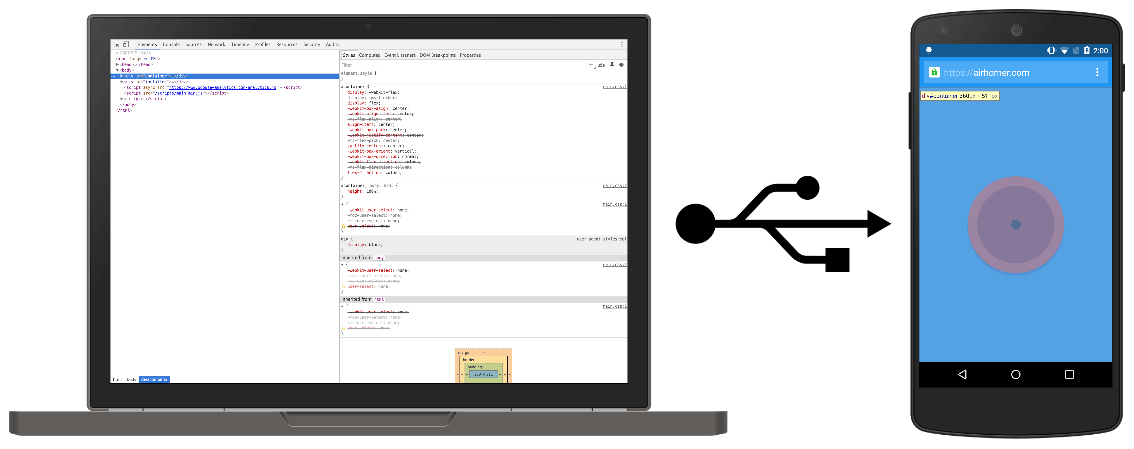
developers.google.com/web/tools/chrome-devtools/remote-debugging/
WebPageTest.org
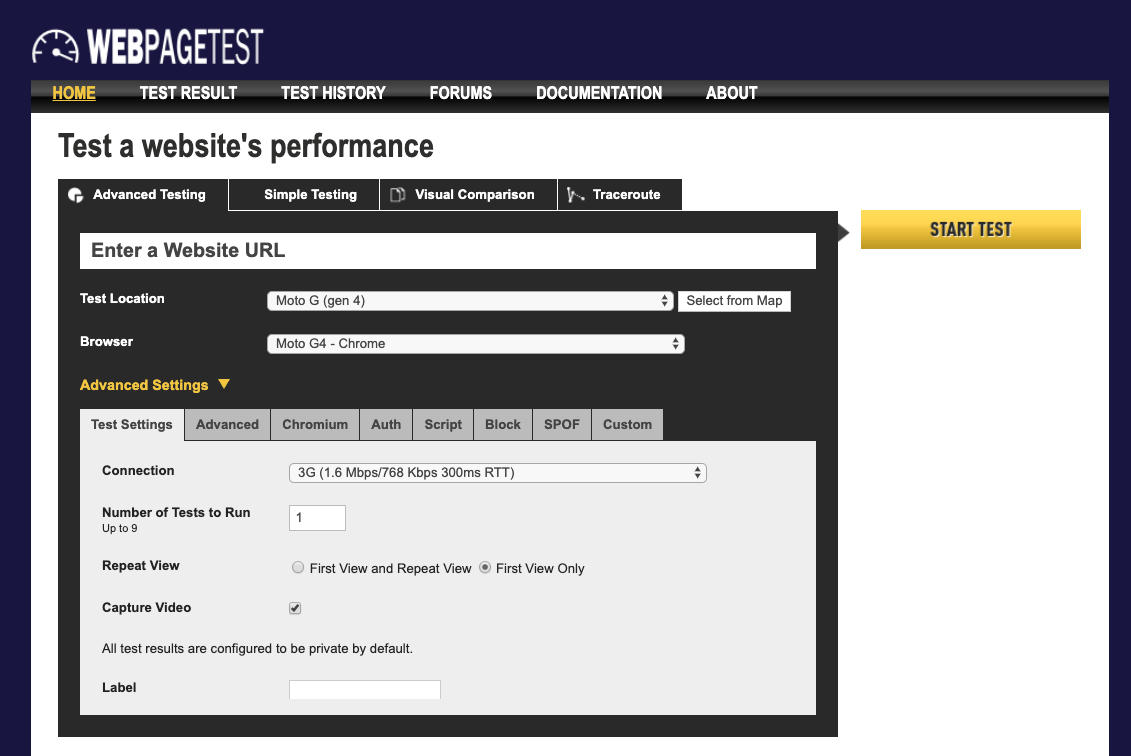
WPT Waterfall
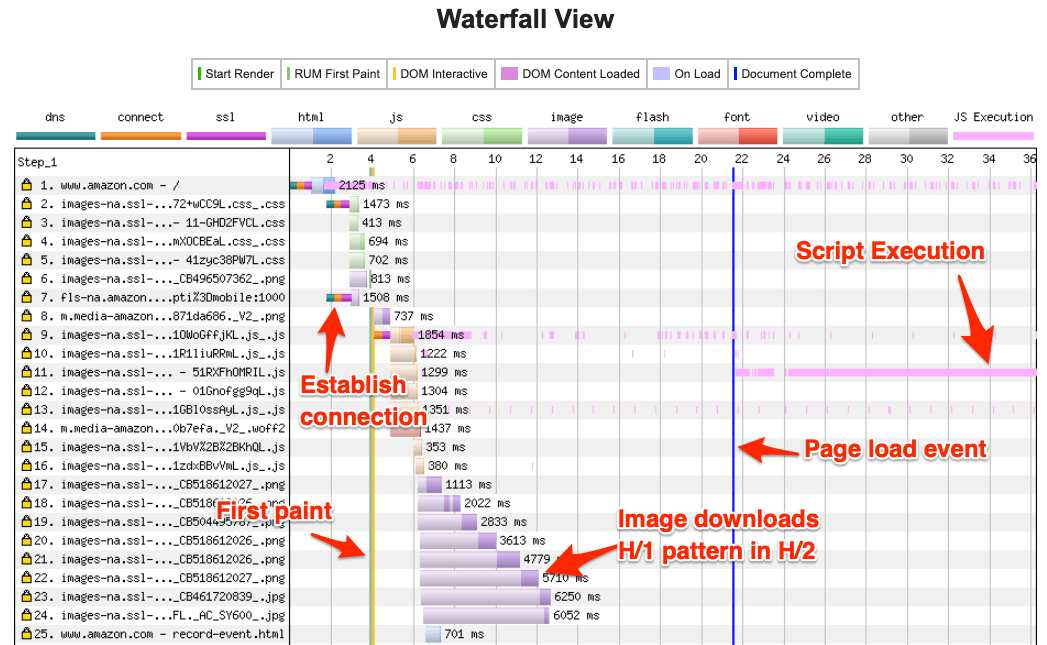
Analyse resources over the network.
WPT Filmstrip

Compare visual output to the network waterfall.
Host your own WPT
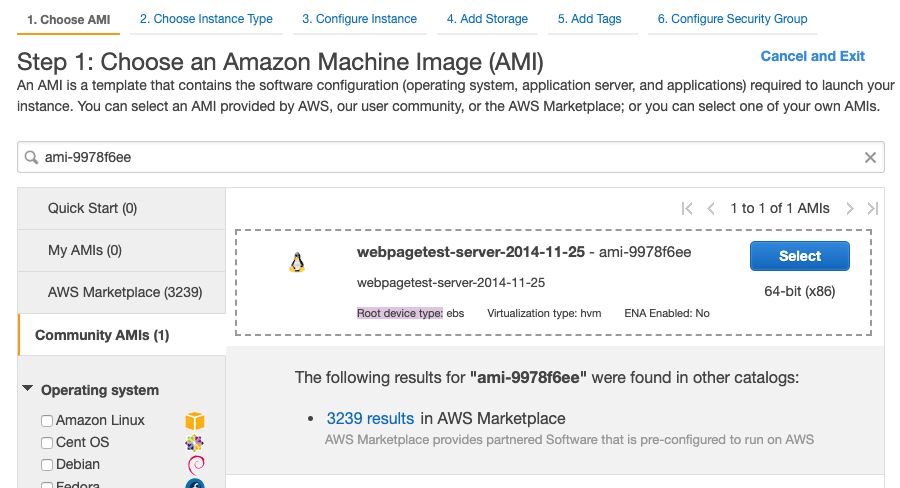
Test internal environments, bulk tests, API key management.
Ad Hoc Summary
- Results in seconds
- High level of detail
- Does not scale well
- Relies on device emulation
Measurement:
- Rule-based
- Ad hoc
- Synthetic
- Real User
- Application
Synthetic Monitoring
Actively measure performance
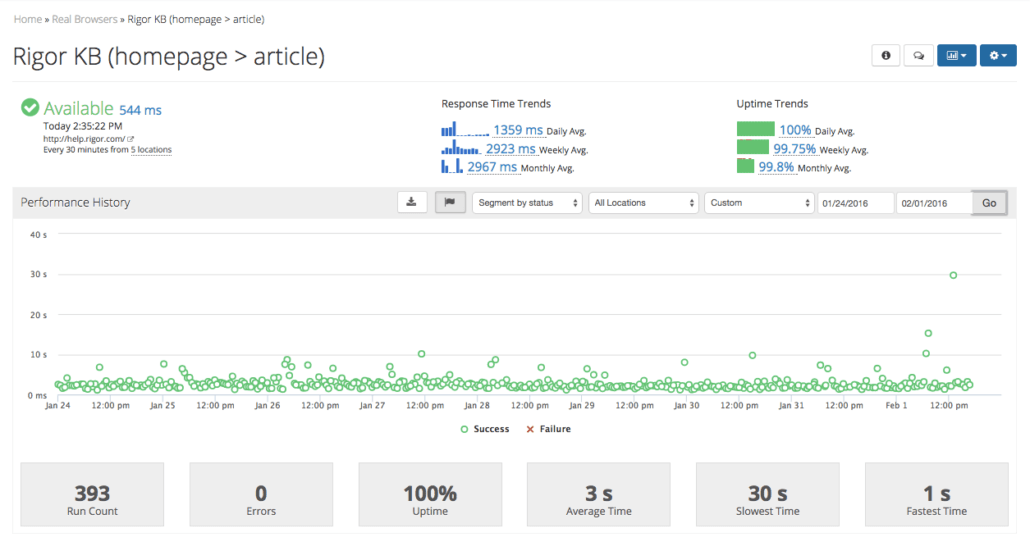
Regular tests on fixed pages / journeys, using browsers hosted on servers.
Good for testing availability and infrastructure performance.
Synthetic Monitoring Tools
* other services are available
Synthetic Summary
- Tests production environment
- Active monitoring 24x7
- Lab testing - easy to spot changes
- Small number of test locations
- Does not measure user experience
- Difficult to test pre-production
Measurement:
- Rule-based
- Ad hoc
- Synthetic
- Real User
- Application
Real User Monitoring (passive)

Collect performance data from every visitor
Real User Monitoring Tools
* other services are available
Real User Monitoring Summary
- Measures real user experience!
- Correlate performance with business metrics
- Global coverage
- Requires implentation in client-side code
- May be blocked by tracker blockers
- Can only measure in production
Measurement:
- Rule-based
- Ad hoc
- Synthetic
- Real User
- Application
Application Performance Measurement (APM)
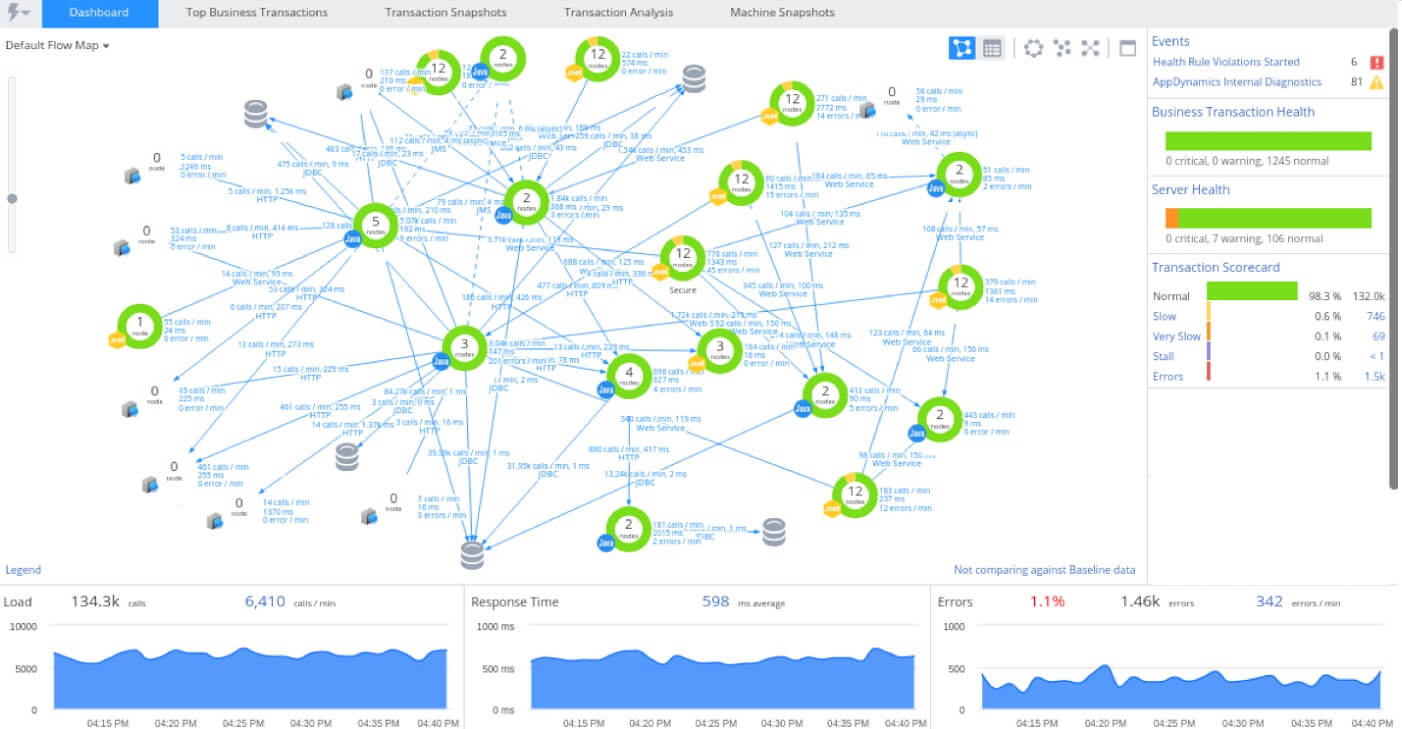
APM Tools
* other services are available
APM Summary
- Code-level profiling
- Database query profiling
- Architecture discovery
- Priced per server / VM
- Limited / no view of UX
Measurement:
- Rule-based
- Ad hoc
- Synthetic
- Real User
- Application
Browser APIs
Provide data for synthetic & real user monitoring
- Navigation Timing API
- Resource Timing API
- User Timing API
Navigation Timing API
Resource Timing API
* only total duration for crossorigin requests without timing-allow-origin response header
User Timing API
Browser APIs
- Navigation Timing API - page load timings
- Resource Timing API - individual resource performance
- User Timing API - bespoke performance measures for you
The Network
A simple example...
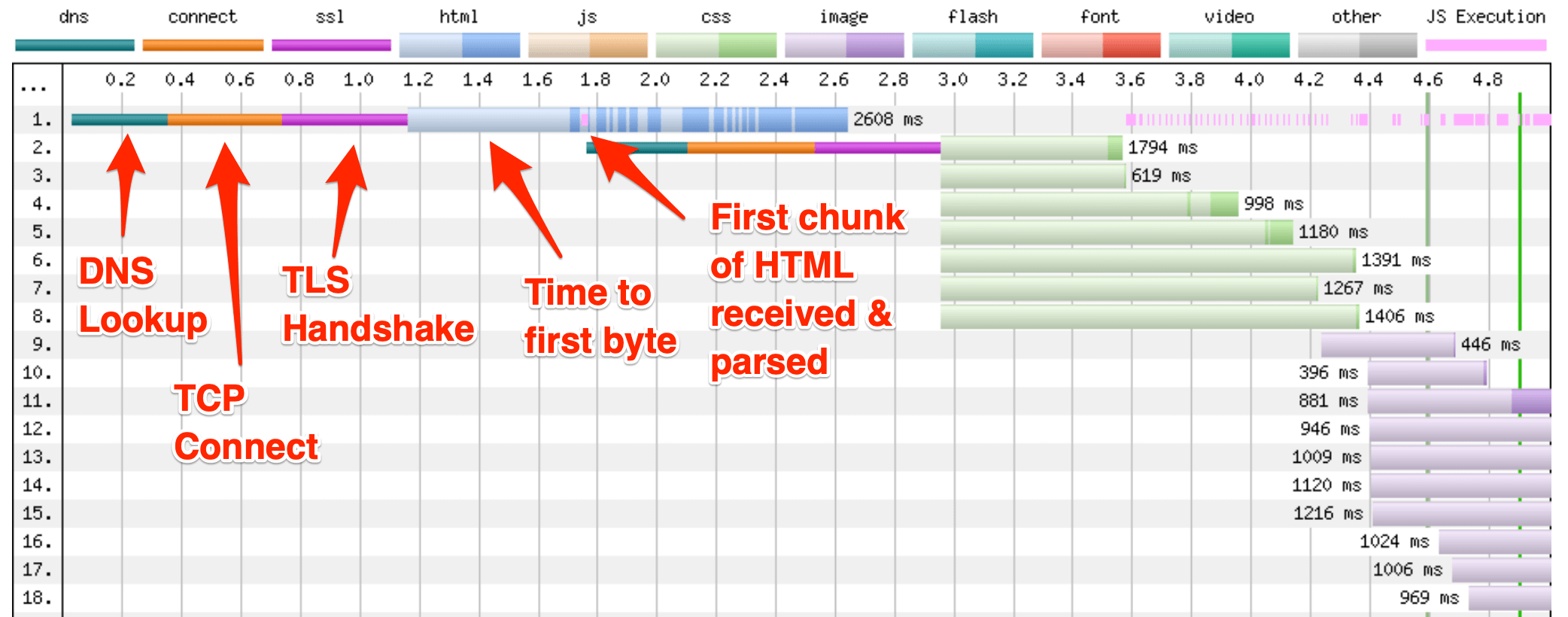
Network requests are complex
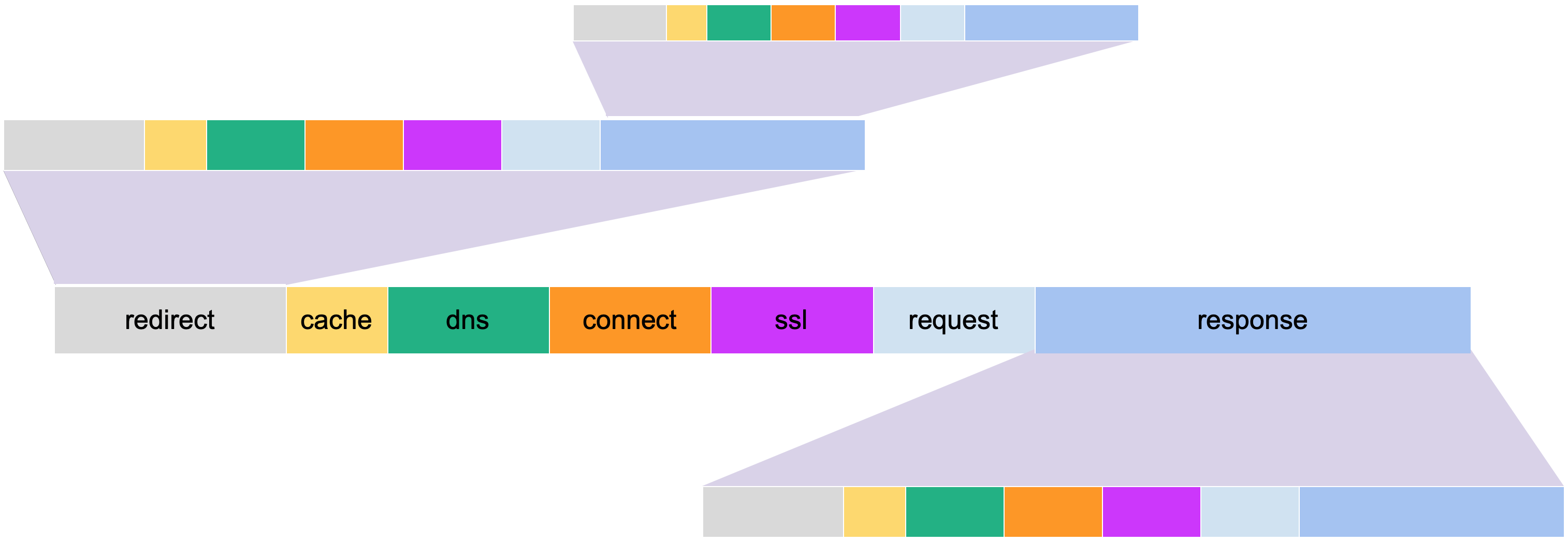
Network Fundamentals
- DNS
- TCP
- TLS
- HTTP/1.1
- HTTP/2
- Congestion Control
- HTTP/3
Network Fundamentals
- DNS
- TCP
- TLS
- HTTP/1.1
- HTTP/2
- Congestion Control
- HTTP/3
DNS Performance
- Increase TTL to 24 - 48h
- Use a high-performance DNS provider
- Pre-connect additional domains*
* <link rel="dns-prefetch" href="//thirdparty.com"/>
Network Fundamentals
- DNS
- TCP
- TLS
- HTTP/1.1
- HTTP/2
- Congestion Control
- HTTP/3
TCP Performance
Reducing tound-trip latency *
- Use a CDN!
- Re-use connections
- Keep requests < 14kb (one packet on most networks)
* optimising RTT benefits all stages
Network Fundamentals
- DNS
- TCP
- TLS
- HTTP/1.1
- HTTP/2
- Congestion Control
- HTTP/3
TLS 1.3

TLS 1.3
Approximately 50% faster than TLS 1.2!
TLS 1.3 Performance Features
- Session Resumption
- TLS False Start
- 0-RTT
Network Fundamentals
- DNS
- TCP
- TLS
- HTTP/1.1
- HTTP/2
- Congestion Control
- HTTP/3
HTTP/1.1
- Six connections per host
- No header compression
- FIFO downloads
HTTP/1.1 Performance Challenges
- Keeping requests smaller than one packet
- Maximising use of connections
HTTP/1.1 Performance Techniques
- Shard across domains
- Bundle resources
- Sprite images
- Cookie-less domains for static content
Network Fundamentals
- DNS
- TCP
- TLS
- HTTP/1.1
- HTTP/2
- Congestion Control
- HTTP/3
HTTP/2
- One connection per host
- HPACK header compression
- Downloads multiplexed on connection
HTTP/1.1 vs HTTP/2
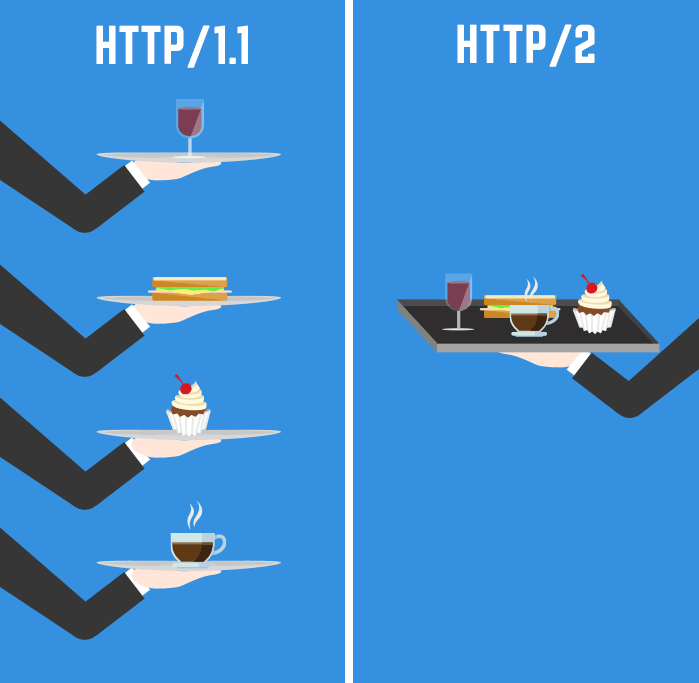
HTTP/2 Performance Challenges
- Minimising impact of packet loss
- Prioritising resources
- Managing browser behaviour
HTTP/2 Performance Techniques
- Defer non-critical content
- Increase initial congestion window
Network Fundamentals
- DNS
- TCP
- TLS
- HTTP/1.1
- HTTP/2
- Congestion Control
- HTTP/3
TCP Congestion Control
Finding the maximum safe bandwidth on a connection
*HTTP/2 only has one connection per domain, packet loss has a greater impact than HTTP/1.x
Fraida Fund | TCP congestion control in lossy wireless networks
TCP Congestion Control
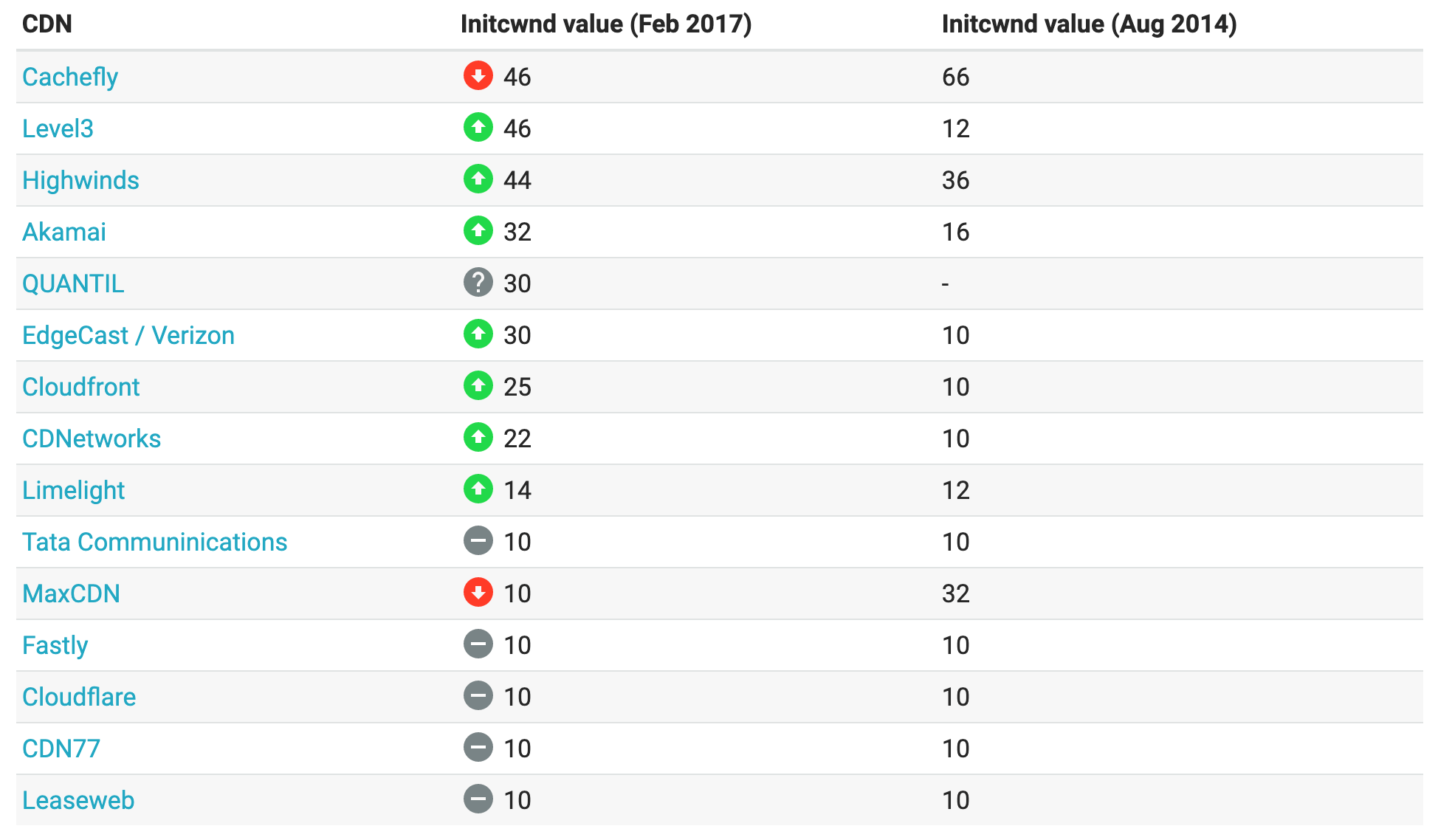
Ensure that your HTML document (including response headers) fits comfortably into your initial congestion window (initcwnd * 1400B)
Network Fundamentals
- DNS
- TCP
- TLS
- HTTP/1.1
- HTTP/2
- Congestion Control
- HTTP/3
HTTP/3
Rewriting the network layer
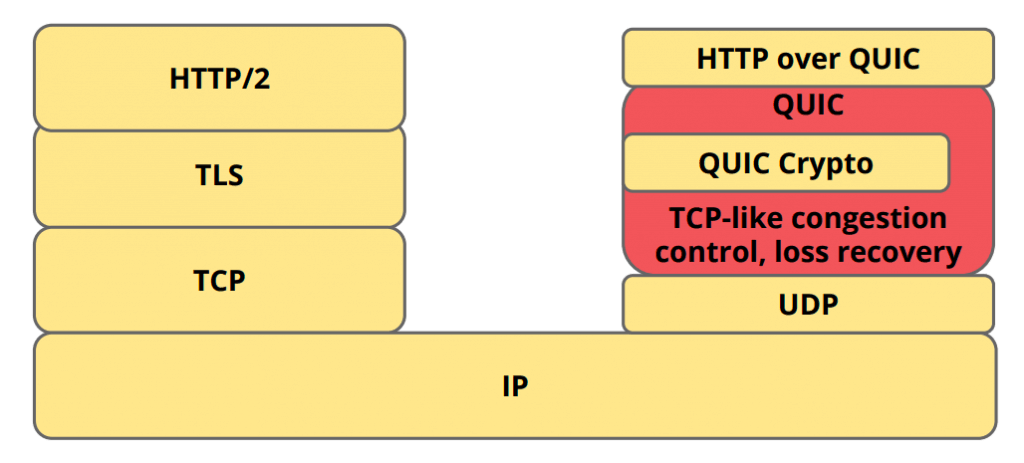
Network Fundamentals
- DNS
- TCP
- TLS
- HTTP/1.1
- HTTP/2
- Congestion Control
- HTTP/3
Other Optimisations
- Resource Hints
- Priority Hints
- Lazy Loading
Resource Hints
<link rel="dns-prefetch|preconnect|prefetch|preload" href="...">dns-prefetch- resolve hostname as soon as possiblepreconnect- establish TCP & TLS connectionprefetch- download this when you're readypreload- download this as soon as possible!
* use with caution - too many can break browser prioritisation and make a page slower!
Priority Hints
Tell the browser what is important
<link rel="dns-prefetch|preconnect|prefetch|preload" href="...">Available in Chrome 74 as origin trial, general availability in Chrome 76
(Native) Lazy Loading
Free up the network for critical resources
<img loading="auto|eager|lazy" src="...">
<iframe loading="auto|eager|lazy" src="..."></iframe>
Images
The rise of Images
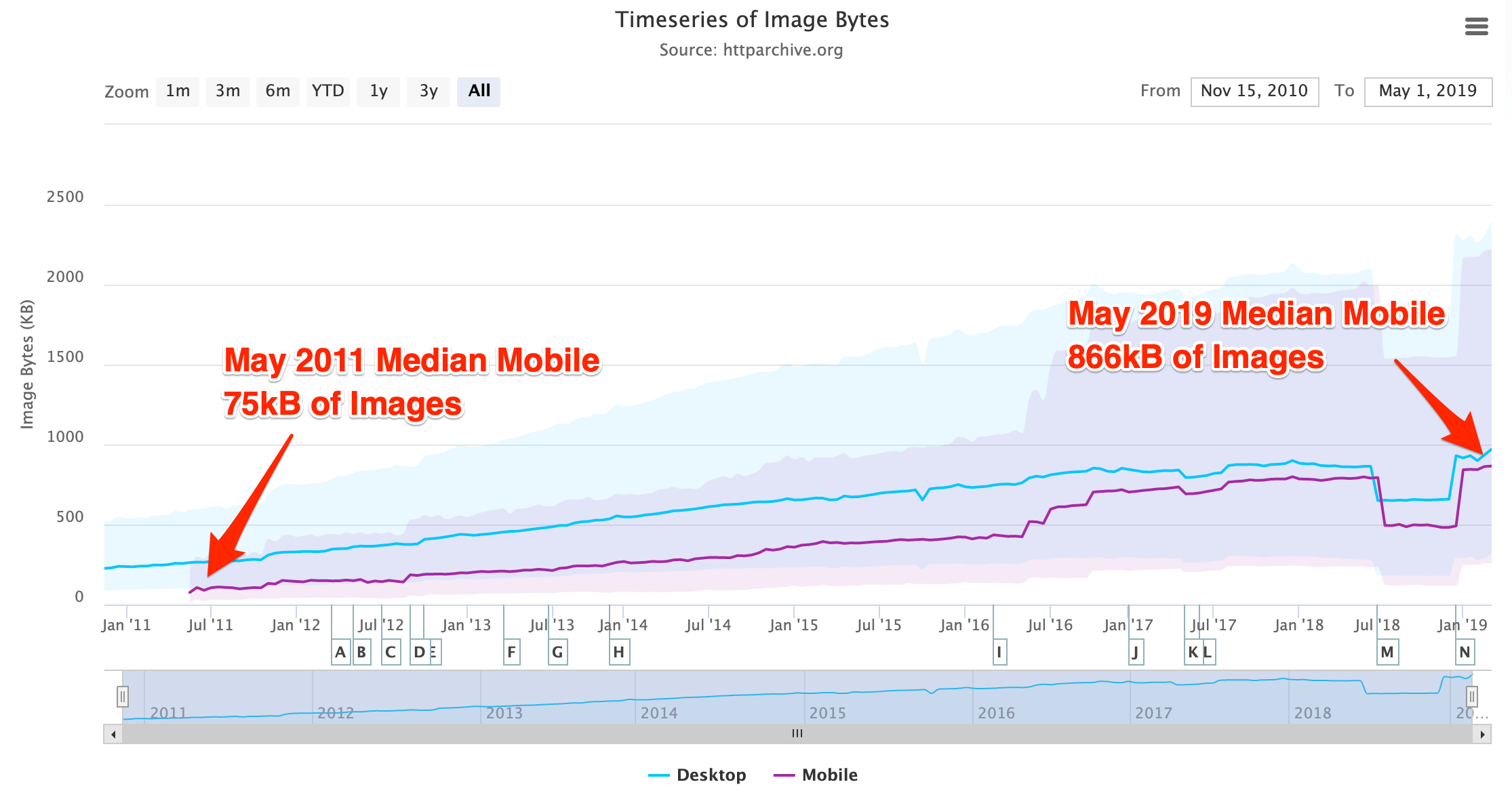
The rise of Images
Desktop Image Bytes are up 330% since 2011
Mobile Image Bytes are up 1050% since 2011
Bitmap vs. Vector
Bitmap (PNG / JPG)

Grid of pixels, does not scale well
Vector (SVG)

Shapes defined in XML, scales infinitely!
Bitmap Scaling
150px

20kB
300px

27kB
450px

86kB
Vector Scaling
150px
18kB
300px
18kB
450px
18kB
Choose Appropriate Formats
Photo Imagery

JPG
(lossy compression)
Icons & Graphics
SVG / PNG(lossless compression)
Animations

GIF / CSS(lossless compression)
Browser-Specific Formats

Chrome & Opera
Safari
Internet Explorer
Baseline vs. Progressive JPEGs


Optimising JPEG Images
- jpegtran - linux cmd-line
- imagemin - node module
- tinypng - web-based (yes for JPEGs!)
- squoosh.app - web-based
Optimising PNG Images
- OptiPNG - lossless, multiple binaries
- pngquant - lossy(!), multiple binaries
- tinypng - web-based
- squoosh.app - web-based
Optimising SVG Images
Responsive Images

Responsive web design gives us an image problem.
Responsive Images: srcset
Send the right DPR image, e.g. 1x to desktop & 2x to retina

<img src="src.png" srcset="1x.png 1x, 2x.png 2x, 3x.png 3x, 4x.png 4x">Responsive Images: srcset
You probably don't need > 2x?
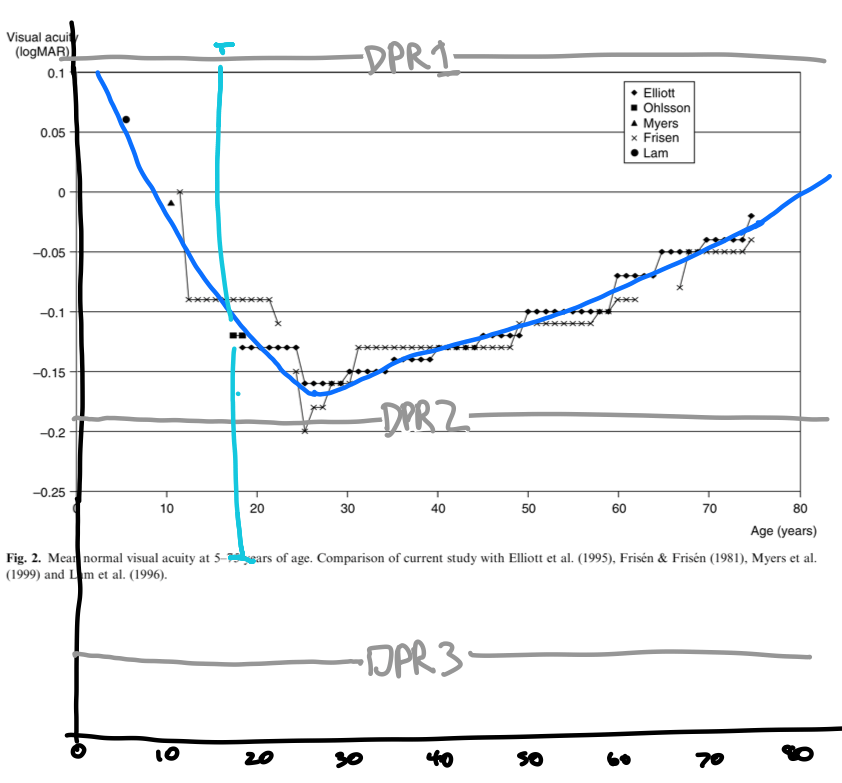
Responsive Images: srcset
Send an image scaled to the viewport

<img src="medium.jpg" srcset="medium.jpg 500w, large.jpg 1000w, extralarge.jpg">Responsive Images: srcset

Is the viewport relevant to image size?
Responsive Images: srcset
Including responsive breakpoints

<img src="medium.jpg" srcset="medium.jpg 800w, large.jpg" sizes="(max-width: 800px) 100vw, 33vw">
Responsive Images: <picture>
Art direction for different displays

<picture>
<source srcset="wide.png" media="(min-width: 800px)">
<img src="slim.png" srcset="slim.png">
</picture>
<picture> & srcset
It gets complicated...
<picture>
<source srcset="xsmall.jpg 1x, xsmall@2x.jpg 2x" media="(max-width: 37.4375em)">
<source srcset="small.jpg 1x, small@2x.jpg 2x" media="(min-width: 37.5em) and (max-width: 64.4375em)">
<source srcset="medium.jpg 1x, medium@2x.jpg 2x" media="(min-width: 64.5em) and (max-width: 79.9375em)">
<source srcset="large.jpg 1x, large@2x.jpg 2x" media="(min-width: 80em) and (max-width: 119.9375em)">
<source srcset="xlarge.jpg 1x, xlarge@2x.jpg 2x" media="(min-width: 120em)">
<img src="medium.jpg">
</picture>
Responsive Images: client hints
Perform content selection on the server / CDN
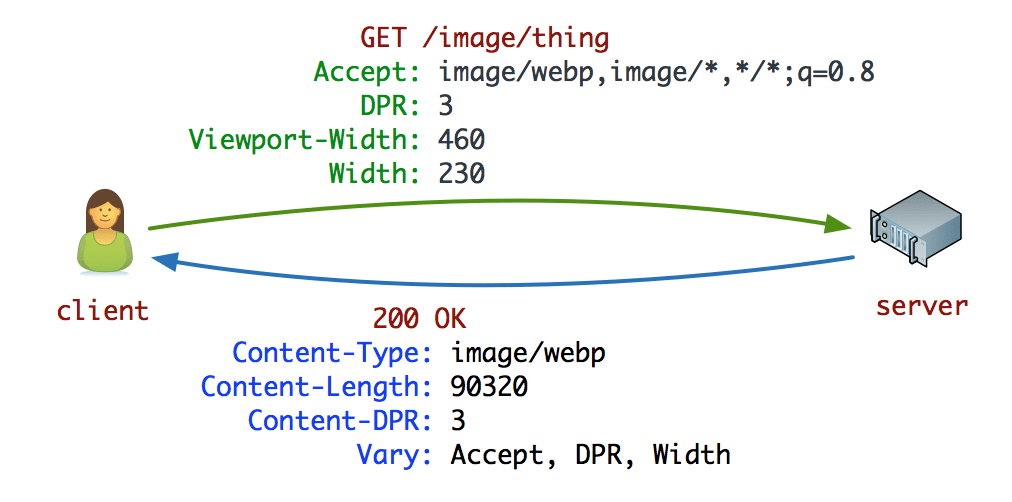
developers.google.com | Automating Content Selection with Client Hints
Lazy-Loading Images
<img loading="auto|eager|lazy" src="...">Allows the browser to determine which images to download immediately, based on viewport and connection speed.
Available in Chrome 76, polyfill with lazysizes.js
Images Summary
- Send different images based on device requirements
- Defer non-critical images
- Select format & compression to minimise bytes
JavaScript
JavaScript
You’re building your own maze, in a way,
and you might just get lost in it.
Marijn Haverbeke, Eloquent JavaScript: A Modern Introduction to Programming
The rise of JavaScript
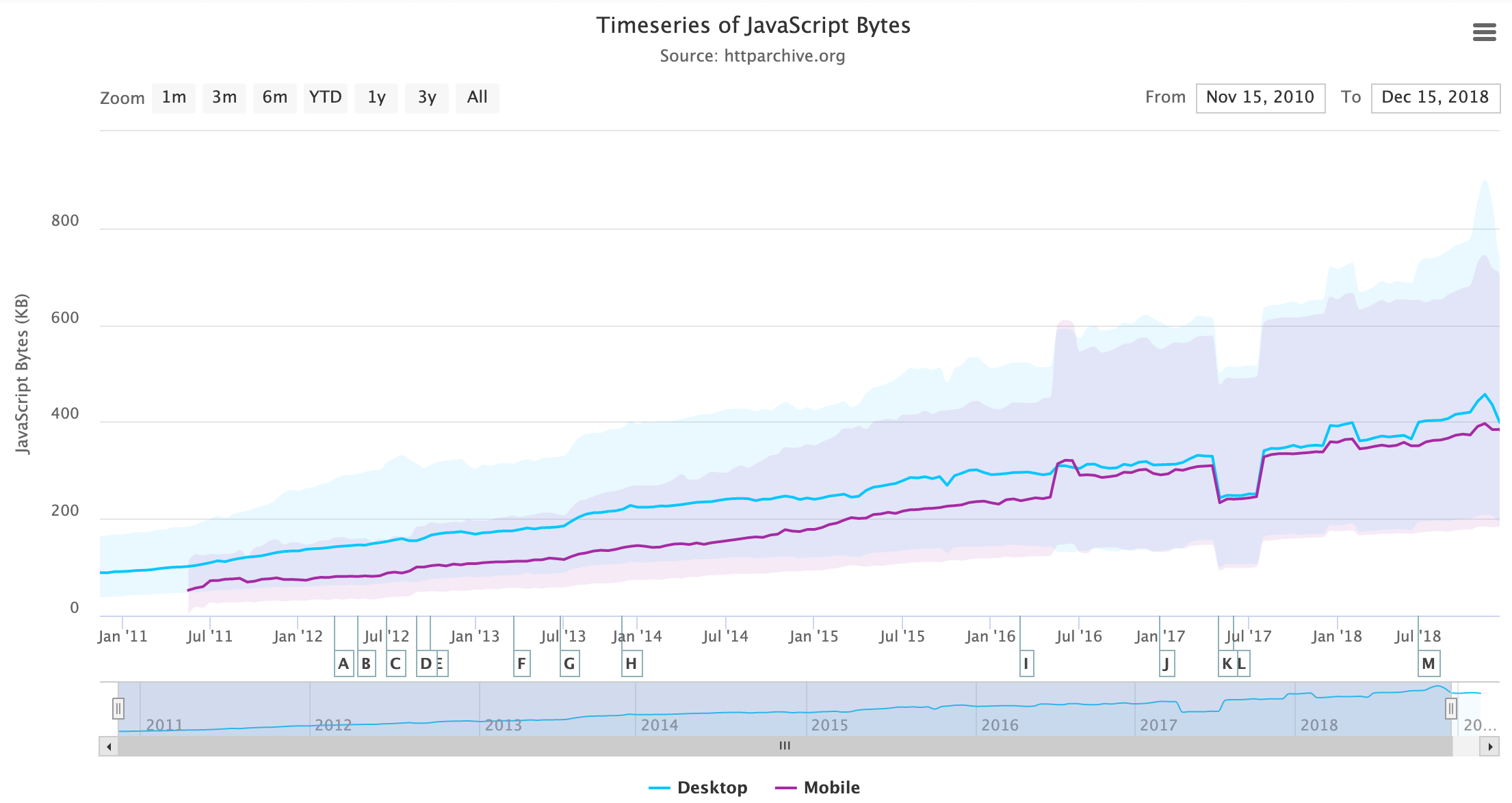
The rise of JavaScript
Desktop JavaScript is up 350% since 2011
Mobile JavaScript is up 650% since 2011
The cost of JavaScript
- Downloading the files
- Parsing the content
- Compiling the code
- Executing
Devices are unequal
Optimisation Techniques
- ES Modules
- Dynamic Import
- Bundle Analysis & Tree Shaking
- Optimising for the Event Loop
Measuring JavaScript Performance
- Use a low-end device
CSS & Fonts
Caching
Cache control headers
- cache-control
- last-modified
- etag
- pragma
- expires
- last-modified
Cache forever
Use for immutable, versioned assets. Best possible caching!
cache-control: immutable, max-age=31536000
- Do not revalidate, even on page reload
- Cache for up to a year
Cache, with revalidation (1)
Use for assets which may change. Validation uses an extra round-trip.
cache-control: max-age:86400
ETag: "33a64...f89d4"
- Cache for up to a day
- Serve cached asset if ETag matches
Cache, with revalidation (2)
Use for assets which may change. Validation uses an extra round-trip.
cache-control: max-age:86400
Last-Modified:
- Cache for up to a day
- Check if the resource has changed
Forced revalidation
Use for frequently updated assets (feeds, product lists)
cache-control: no-cache
ETag: "33a64...f89d4"
- Do not use without validation
- (must include a last-modified or ETag header)
Don't cache!
Use for sensitive responses (set-cookie, user-specific)
cache-control: no-store
- Do not store anything about the response
Caching Summary
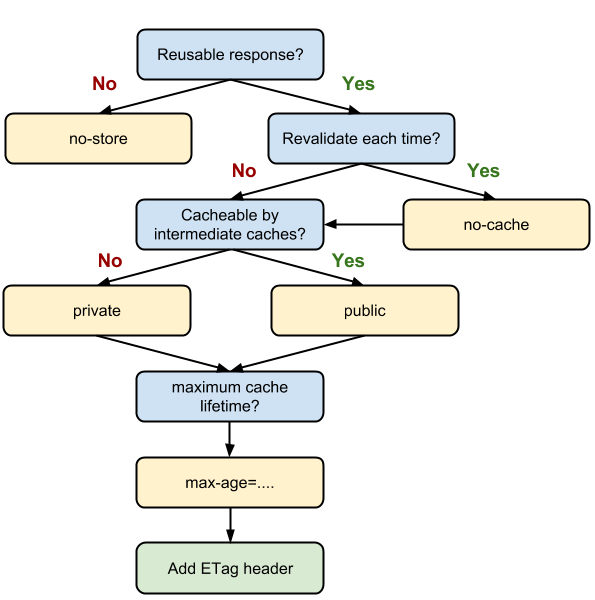
CDN Considerations
- stale-while-revalidate
- vary
- no-transform
Devices 📱
Device Characteristics:
- Screen resolution (DPR)
- Processing (CPU & RAM)
- Mobile Network
- Browsing Context
Device Characteristics:
- Screen resolution (DPR)
- Processing (CPU & RAM)
- Mobile Network
- Browsing Context
Device Characteristics:
- Screen resolution (DPR)
- Processing (CPU & RAM)
- Mobile Network
- Browsing Context
Device Characteristics:
- Screen resolution (DPR)
- Processing (CPU & RAM)
- Mobile Network
- Browsing Context
Device Characteristics:
- Screen resolution (DPR)
- Processing (CPU & RAM)
- Mobile Network
- Browsing Context
Device Characteristics:
- Screen resolution (DPR)
- Processing (CPU & RAM)
- Mobile Network
- Browsing Context
Third-party Content
Third-party scripts account for
>70% of requests
Tags serve business goals
- Measurement & Analytics
- Ads & Retargeting
- Optimisation & Testing
- Comments & Live Chat
- Tag Management
Blocking tags create availability risk
<script src="//code.jquery.com/jquery-1.7.1.min.js"></script>
Single Point of Failure blank screen duration:
Windows: 30s | Android: 60s | MacOS: 75s | iOS: 75s
Tags create performance risk
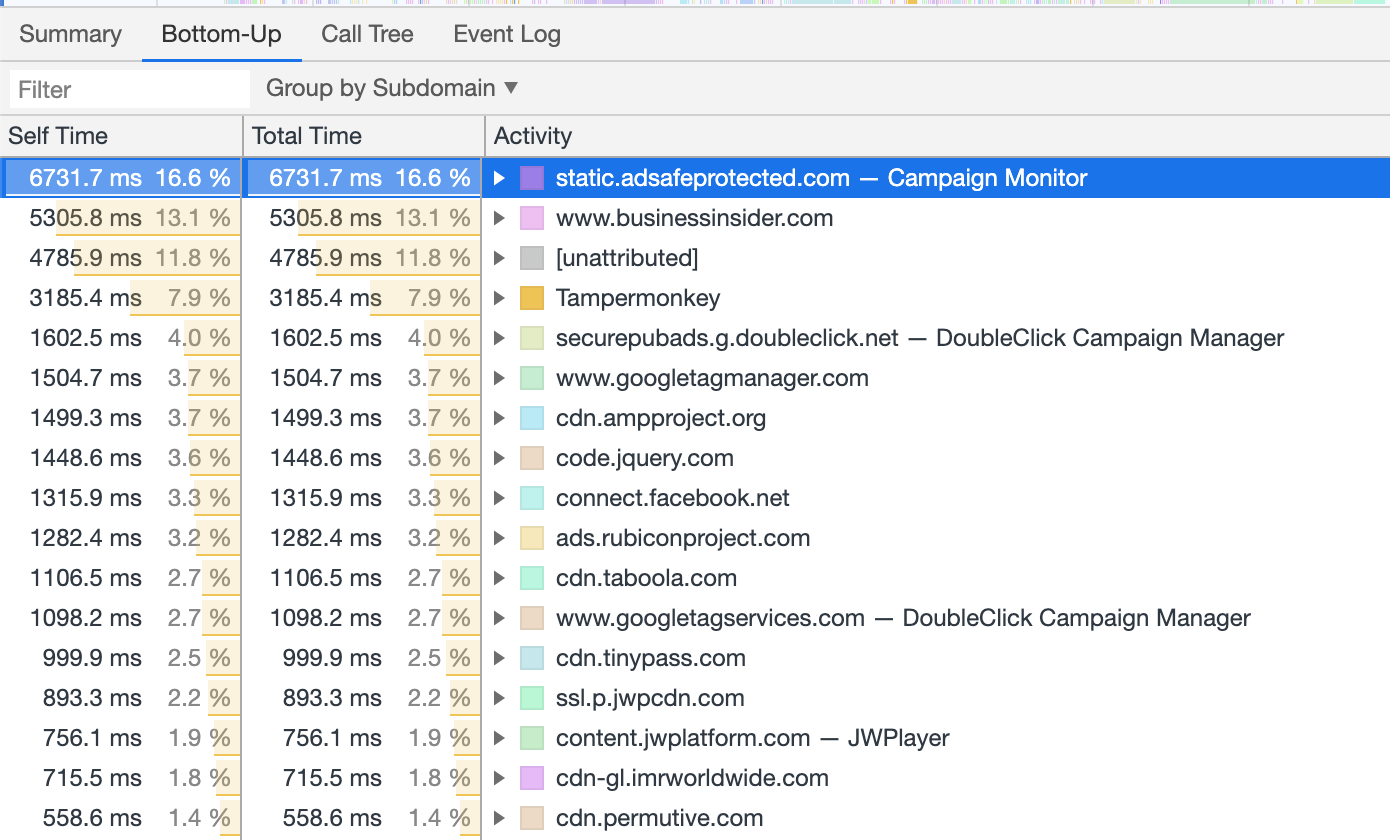
Main thread blocked for over six seconds by Campaign Monitor
Tags can cause frustration!
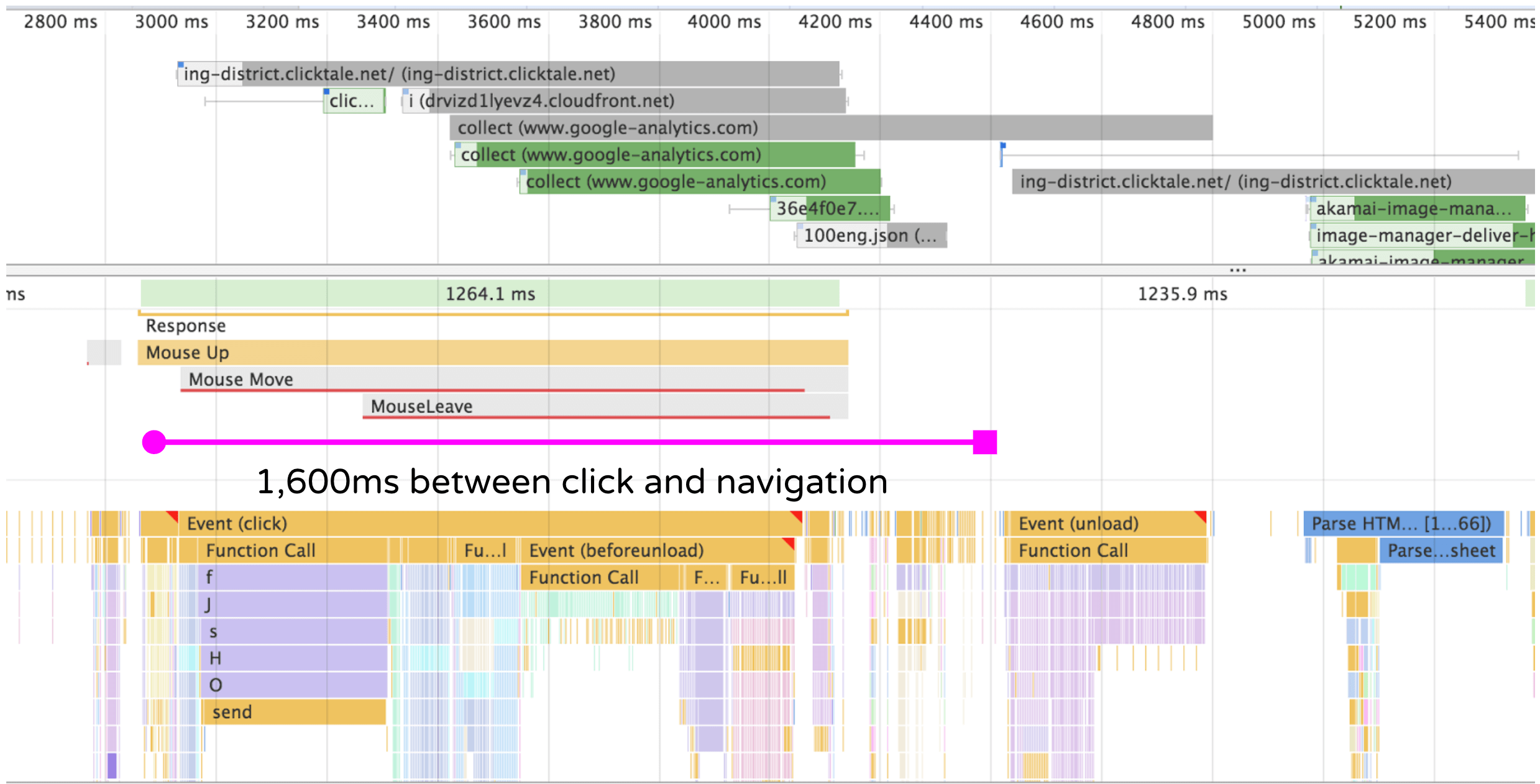
1.6s delay on click event, caused by third-party scripts
Tags can cost us $£€ 😱

Managing Third Parties
- Subresource Integrity
- Content Security Policy
- Reporting API
- Self-hosting & Proxying
- Service Worker
Subresource Integrity
Validate resources against a crypto hash.
Protects against malicious code changes, not poor performance!
<script
src="//thirdparty.com/script.js"
integrity="sha256-ivk71nXhz9nsyFDoYoGf2...=">
</script>Content Security Policy
Only allow scripts / images / frames from pre-approved domains
Content-Security-Policy:
default-src 'self';
img-src *;
media-src media1.com media2.com;
script-src userscripts.example.com
Reporting API
Validate resources against a crypto hash.
Protects against malicious code changes, not poor performance!
Report-To:
{
"group": "csp-endpoint",
"max_age": 10886400,
"endpoints": [{
"url": "https://example.com/csp-reports"
}]
},{
"group": "network-endpoint",
"max_age": 10886400,
"endpoints": [{
"url": "https://example.com/network-errors"
}]
},{
"max_age": 10886400,
"endpoints": [{
"url": "https://example.com/browser-errors"
}]
}Self-hosting & Proxying
Serve third party content from your domain
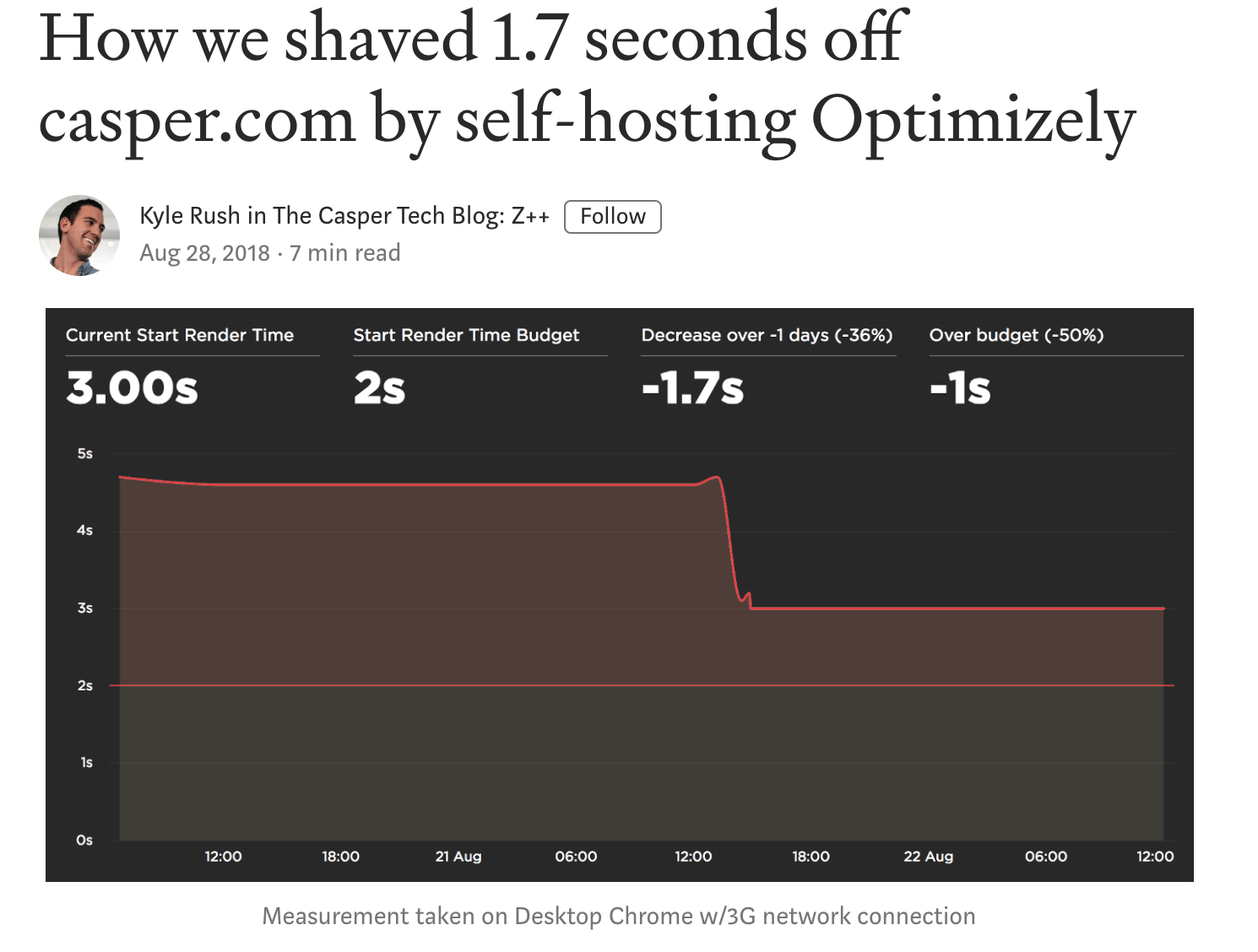
Service Worker
Time out slow responses
function timeout(delay) {
return new Promise(function(resolve, reject) {
setTimeout(function(){
resolve(new Response('', {
status: 408,
statusText: 'Request timed out.'
}));
}, delay);
});
}
self.addEventListener('fetch', function(event) {
if (/\.js$/.test(event.request.url)) {
event.respondWith(Promise.race([timeout(2000), fetch(event.request.url)]));
} else {
event.respondWith(fetch(event.request));
}
});Akamai | 5 ways to prevent slow 3rd party front-end services
Managing Third Parties
- Subresource Integrity - protects from malicious code
- Content Security Policy - only run expected code
- Reporting API - report on code erros & CSP violations
- Self-hosting & Proxying - maintain control of delivery
- Service Worker - race third parties against timeouts
Automation
Tooling
- Adhoc
- CI / CD
- Alerting
Adhoc Tooling
Advanced Concepts
Bring on the workers!
- Web Worker
- Service Worker
- Edge Worker
Web Worker
- 100% extra threads! 💯
- Logical separation of compute vs. UI
- postMessage communication is slow
- Only ArrayBuffers can be transferred for free
Service Worker
- Can serve content when offline
- Proxy third-party requests and apply timeouts
- Augment requests to add context (e.g. image width)
- Does not work for first view
- Only one permitted per domain
- Hard to test & debug
Edge Worker
- Logic at the edge means ⬇️ latency
- Offload expensive logic from the client
- Lack of standards = vendor lock-in
- Basic functionality only - geo / user agent / cookies
Worker Summary
- Web Worker - offload intensive JS to another thread
- Service Worker - a JS proxy in your browser
- Edge Worker - serverless at the edge
Web Assembly (WASM)
CSS Paint API
Thank you 🙏
simon@hearne.me